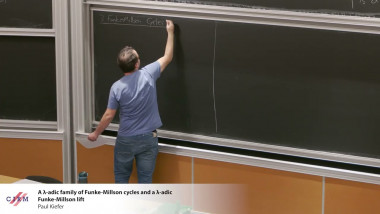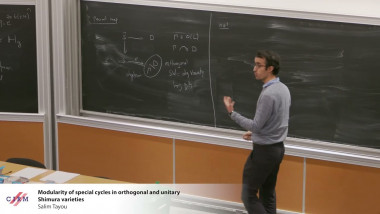
A $\lambda$-adic family of Funke-Millson cycles and a $\lambda$-adic Funke-Millson lift
By Paul Kiefer

Modularity of special cycles in orthogonal and unitary Shimura varieties
By Salim Tayou
Appears in collection : Cohomology of arithmetic groups, lattices and number theory: geometric and computational viewpoint / Cohomologie des groupes arithmétiques, réseaux et théorie des nombres: géométries et calculs
Siegel introduced generalised theta series to study representation numbers of quadratic forms. Given an integral lattice $L$ with quadratic form $q$, Siegel’s degree $n$ theta series attached to $L$ has a Fourier expansion supported on $n$-dimensional lattices, with Fourier coefficients that tells us how many times $L$ represents any given $n$-dimensional lattice. Siegel proved that this theta series is a type of automorphic form. In this talk we explore how the theory of automorphic forms, together with the theory of quadratic forms, helps us understand these representation numbers. We reveal arithmetic relations between ”average” representation numbers (where we average over a genus), and finally we give an explicit formula for these average representation numbers in terms of the Fourier coefficients of Siegel Eisenstein series. In the case that $n = 1$ (meaning we are looking at how often $L$ represents an integer) this yields explicit numerical formulas for these average representation numbers.
